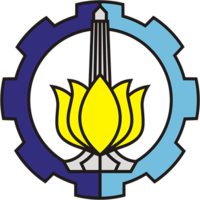DINAMIKA INTERAKSI ANTARETNIK DALAM MEWUJUDKAN KESERASIAN SOSIAL DI WILAYAH PERBATASAN NEGARA INDONESIA – MALAYSIA
Abstract
The research reveals the dynamics of interaction between the three major ethnic groups (ethnic Dayak, Malay and Chinese) living in Entikong Subdistrict. These interactions are manifested in social relationships, ie relationships as relatives, as friends. Through qualitative analysis, the relationship is still strong in primordial loyalty among ethnic groups. It is characterized by a tendency to choose individuals from their own ethnic groups to serve as relatives. The results also show that there are two forms of ethnic group settlements in Entikong Subdistrict, namely: Mixed pattern, ie settlement area in which consists of various ethnic groups, in which there is more intensive inter-ethnic social contact that can encourage the realization of harmony social; Separate pattern, ie settlement area which consists of one
ethnic group of the same kind, generally inhabited by Chinese ethnic groups. The change of settlement pattern indirectly caused by the expansion of subdistricts and population growth
Keywords
Full Text:
PDFReferences
Bahari, Yohanes. 2005. Model Resolusi Konflik Berbasis Pranata Adat Pada Masyarakat Adat Kanayatn di Kalimantan Barat. Laporan Penelitian Fundamental, Dikti.
Barth, Fredrick. 1969. Kelompok Etnik dan Batasannya. Terjemahan Nining L. Soesilo. Jakarta: UI Press.
Bogdan, Robert C & Taylor, Steven J. 1990. Introduction To Qualitative Research Methods. Alih Bahasa Arief Furchan. Surabaya: Usaha Nasional.
Bruner, Edward M. 1974. “ The Expression of Ethnicity in Indonesia”. Dalam Abner Cohen (ed) : Urban Ethnicity. London: Tavistock Publications.
Cohen, Abner. 1974. “Introduction”. dalam Abner Cohen (ed). Urban Ethnicity. London: Tavistock Publications.
Cohen, Jacob,Cohen, Patricia. 1983. Applied Multiple Regression/Correlation for yhe Behavioral Sciences, London: Lawrence Erlbaum Associates, Publishers.
Coser, Lewis A. 1956. The Functions of Social Conflict. New York: The Free Press.
Eidheim, Harald. 1969. “Ciri Etnik Sebagai Cacat Sosial” , dalam Frederick Barth (ed). : Kelompok Etnik dan Batasannya. Penerjemah: Nining L. Soesilo, Jakarta: UI Press.
Furnivall, J.S. 1980. “Plural Society”, dalam Hans-Dieter Evers (ed). Sociology of South-East Asia: Readingin Social Change and Development. Kuala Lumpur: Oxford University Press.
Gelfand, Donald E. 1973. “Influx-Exodus: An Explanatory Study of Racial Integration”, in Donald E. Gelfand and Russell D. Lee (ed). : Ethnic Conflicts and Power: A Cross-National Perspective. New York: John Wiley & Sons, Inc.
Giring. 2004. Madura di Mata Dayak: dari Konflik Ke Rekonsiliasi. Yogyakarta: Gajah Mada University Press.
Grillo, R.D. 1974. “Ethnic Identity and Social Stratification on a Kampala Housing Estate”, dalam Abner Cohen (ed) : Urban Ethnicity. London: Tavistock Publications.
Horton, Paul B. 1965. Sociology and The Health Sciences. New York: Mc Graw-Hill Book Company.
Izikowitz, Karl G. 1969. “Lingkungan Hidup di Laos”, dalam Frederick Barth (ed) : Kelompok Etnik dan Batasannya. Penerjemah: Nining L. Soesilo, Jakarta: UI Press.
Koentjaraningrat. 1991. Metode-Metode Penelitian Masyarakat. Jakarta: Gramedia.
Martodirdjo, Haryo S. 1991. Orang Tugutil di Halmahera dan Dinamika Sosial Masyarakat Penghuni Hutan. Bandung: Disertasi Program Pascasarjana Unpad.
Miles, Matthew B. & Huberman, A. Michael. 1992. Analisis Data Kualitatif. Jakarta: UI Press.
Mitchell, J.C. 1974. “Perception of Ethnicity and Ethnic Behavior: An Empirical Exploration”, dalam Abner Cohen (ed) : Urban Etthnicity. London: Tavistock Publications.
Nawi, Abdullah. 1986. “Peranan Kebudayaan Kebangsaan Dalam Integrasi Rakyat”, dalam Cheu Hock Tong (Penyunting): Beberapa Asas Integrasi Nasional Pro dan Kontranya. Kuala Lumpur : Penerbit Karya Kreatif.
Parsons Talcott. 1951. The Social System. New York: The Free Press.
Peh, Ting Chew. 1986. “Sains Sosial dan Integrasi Nasional”, dalam Cheu Hock Tong (Penyunting): Beberapa Asas Integrasi Nasional Pro dan Kontranya. Kuala Lumpur: Penerbit Karya Kreatif.
Pelly, Usman. 1987. “Kulitas Bermasyarakat”. Ringkasan Hasil Penelitian. Jakarta: kantor Menteri Negara KLH.
__________. 1993. “Pedoman Pengelolaan Keserasian Sosial”. Laporan Penelitian. Kerjasama Kantor Menyeri KLH dengan Pusdip-KLH IKIP Medan.
Poloma, Margaret M. 1987. Sosiologi Kontemporer (Terjemahan), Jakarta: Penerbit CV. Rajawali.
Purwana, Hendarta Suta. 2003. Konflik Antarkomunitas Etnis di Sambas 1999. Suatu Tinjauan Sosial Budaya. Pontianak: Romeo Grafika.
Royce, Anya Peterson. 1982. Ethnic Identity. Bloomington: Indiana University.
Soehardiman. 1985. “Pembauran Bangsa Sebagai Usaha Pemanunggalan Dalam Rangka Mewujudkan Persatuan dan Kesatuan Nasional”, dalam Walkodri dan Djudjuk Juyoto. Pembauran Bangsa : Suatu Konsep-Konsep Pemikran. Yogyakarta: CV. Nur Cahaya.
Soekanto, Soerjono. 2002. Teori Sosiologi Tentang Perubahan Sosial. Jakarta: Ghalia Indonesia.
Soemardjan, Selo. 1988. “Pendahuluan”, dalam Selo Soemardjan (ed). Stereotipe Etnik, Asimilasi. Integrasi Sosial, Jakarta: Pustaka Grafika Kita.
Suparlan, Parsudi. 1989. “Pendahuluan”, dalam Parsudi Suparlan (ed), Interaksi Antaretnik di Beberapa Provinsi di Indonesia, Jakarta: Depdikbud.
Veeger, K.J. 1985. Realitas Sosial. Jakarta: Penerbit PT. Gramedia.
DOI: http://dx.doi.org/10.12962%2Fj24433527.v10i2.2420
Refbacks
- There are currently no refbacks.
This work is licensed under a Creative Commons Attribution 4.0 International License.





